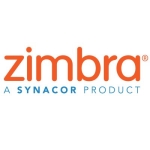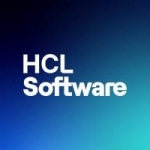My deployment model for Microsoft Exchange in this moment is for a company that uses Exchange Server on-premise solution to support its infrastructure services.
Although we keep all user data in the cloud, we have some kind of hybrid solution. It's Exchange service; our installation of Microsoft Exchange service is on-premise to cloud solution from Microsoft. In this moment, we are using some hybrid solution, although that on-premise solution is mostly for supporting our company infrastructure.
The best features of Microsoft Exchange, which I have answered many times in my trainings, is that it was a very compact, still extensible environment for user communication. There was a very short moment when it included messaging and instant messaging services, similar to messenger. It was not the best, but what was the best point is that it was complex, but simple to use with a clean interface for users. This could be a very short expression of the feeling.
Areas of Microsoft Exchange that have room for improvement could use some deeper thinking. I believe there could be better communication between Exchange Online and that cloud-oriented service and this Exchange server; some more precise communication to accept it as a single point of communication.
Another point would be that I would appreciate as a lazy administrator if there were better performance and monitoring available directly to the users and to the server. I can do that, but I need to at least have some knowledge and improve the scripts and so on. I would appreciate better performance, monitoring, and availability monitoring of Microsoft Exchange available to admin.
I have more than 25 years of experience with Microsoft Exchange, as I have been working from the beginning of Exchange Server.
I would rate technical support from Microsoft Exchange as great because we also had some issues while upgrading the system and maintaining it. The response is not immediate, but we are not paying so much money. As a general customer, I was very satisfied. They were fast enough and very skilled to support our needs.
My initial setup of Microsoft Exchange was very easy, and I am still doing it frequently; it's very easy to set up the environment.
I'm not a reseller and I have a loose connection to Microsoft solutions. I was not only a user, it means I was administrator of the system, administering it, so I was not a real user; my users were clients of the server. I was indirectly, loosely connected to Microsoft because I was also Microsoft certified professional. I was evaluated as having knowledge and I was also teaching it, so I had better connection to the server information.
The protocols I most utilize with Microsoft Exchange for integration are historically linked because now there are not very many ways to use Exchange since it became a messaging service. Today's world internet is communicating through SMTP, so SMTP is most important. We can say that is the only one, but there are still some extensions for reaching this Exchange server. In this moment in a Microsoft environment, there are different protocols that are good such as EWS.
It's something more advanced or some improvement of HTTP, because HTTP communication is used to communicate to web pages. You can access Exchange mailbox in the same way, but it's not called HTTP; it's a little bit enhanced protocol called Exchange Web Services, EWS. There are still ways to connect to your mailboxes.
Data loss prevention in Microsoft Exchange is critical for me. We use only part of these services because in the past, Exchange Server served and maintained user mailboxes. Now, I'm hired for an organization that moved all user mailboxes to cloud. We are still using Microsoft environment, and it's still Exchange server, but it's not directly accessed; it's called Exchange Online.
Regarding security, we now only use security infrastructure of Microsoft Exchange. That's very important. We have protected communication to Exchange server, using HTTPS connections to communicate to Exchange server and SMTP. Although SMTP protocol was built to communicate between mail servers, and the first internet was based as a free communication without any protection, now we are more concerned about security. That's why we also use the security part of SMTP, TLS, and so on. We use it, and we evaluate it as good at least.
Regarding the price of Microsoft Exchange, I don't really know, because now I'm completely disconnected from this due to working for a big company. In the past, I remember Microsoft Exchange was not the cheapest solution, but as it was very complex, covering many features needed for common users, it was an acceptable price. The ratio of power and price was very good.
I rate Microsoft Exchange a nine out of ten.





















